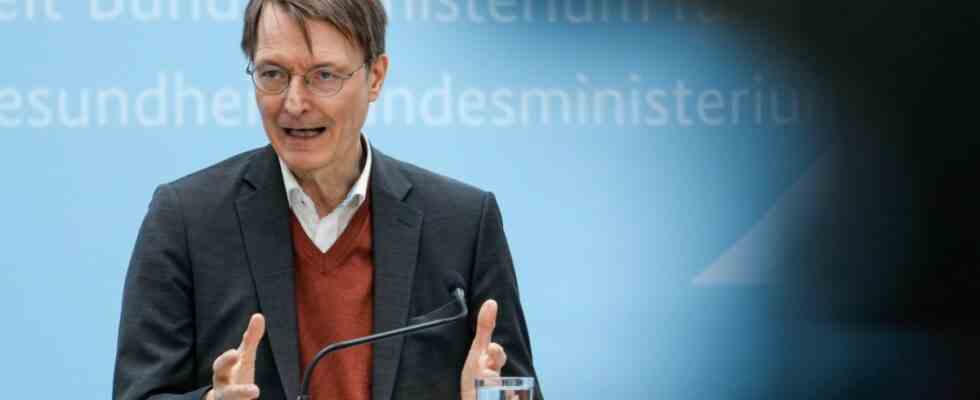Federal Health Minister Karl Lauterbach wants to reform the hospitals and will present the plans for a fundamental reform of hospital care at 10 a.m. in the morning. The declared goal is to free care more from financial pressure. For this purpose, the previous remuneration for flat rates for treatment cases is to be decisively changed. The reform proposals were drawn up by a commission of experts set up by the federal government in May.
The Bundestag recently passed a first package of laws that, among other things, provides more money for children’s hospitals, which are currently at the load limit. However, the German Hospital Society called for an overall concept for a reform. “The constant detachment of individual solutions brings more distortions than progress in the system,” said CEO Gerald Gass, the newspapers of the Funke media group. First of all, the financing gap in the operating and investment costs of the clinics must be closed before the funds can be redistributed.
Lauterbach had made it clear in advance that it was about “no less than a revolution” in the financing of hospitals. “We have lost the balance between medicine and economics,” he said in the Bundestag last week. The current system emphasizes “cheap and quantity”. In clinics, however, one cannot proceed with the same rules as with food discounters.
Will the reforms herald the end of flat-rate payments per case?
In essence, it should be about “overcoming” the case-based flat rates. Clinics receive a certain fee for each patient and diagnosis, regardless of the effort involved. This system of flat rates per case puts clinics under great economic pressure. And it has meanwhile become so independent that it is at the expense of the quality of care, according to Lauterbach’s analysis. This is due to a “hamster wheel effect”: Clinics can only maintain or increase their budget by increasing the number of cases. And clinics made a profit that spent as little money as possible on services – higher expenses, on the other hand, tended to mean losses.
The remuneration via case flat rates was introduced almost 20 years ago in order to make the system more efficient and, for example, to shorten the hospital stays for patients. There is a catalog with case and diagnosis groups for this. The clinics then receive a flat-rate amount in euros from the respective health insurance company for each patient or case of treatment, as the Central Association of Statutory Health Insurance Funds (GKV) explains. The more patients a clinic treats, the more revenue it generates. Costs for nursing staff have already been removed from the flat rates in order to eliminate the pressure to save on nursing. The cash registers pay all costs incurred.
Overall, the expenses for the nationwide around 1900 clinics make up the largest individual item in the statutory health insurance. According to the National Association of Statutory Health Insurance Funds, almost 85.9 billion euros were incurred last year – and thus around one in three euros in relation to the total benefit expenditure of 263 billion euros. In general, the financing of the hospitals is divided into two parts: the operating costs including staff are paid by the health insurance companies, investment costs such as for new buildings or new equipment are to be financed by the federal states.

